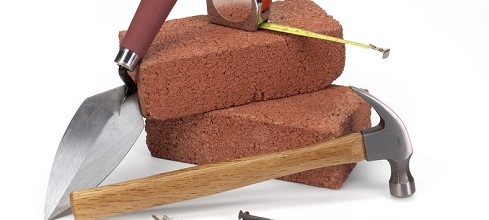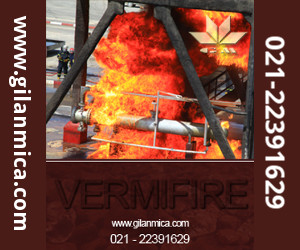Brick Laying
The most critical consideration when designing a freestanding wall is to make sure that it is adequate to resist severe gusts of wind. For walls no more than two etres in height there are simple guides that provide adequately stable construction. A ood guide is Building Research Establishment Good Building Guide 14 Building Simple lain Brick or Blockwork Freestanding Walls. For walls greater than two metres in height advice of a structural engineer should be sought.
The following types of construction can be selected for stability. Piers may be incorporated preferably projecting both sides of the wall. Alternatively, if space permits, staggering or curving the wall in plan is an option. For greater stability or taller walls, diaphragm forms, reinforced piers and chevron plan shapes can be considered.
Regardless of the structural requirements, detailing is extremely important in order to protect the brickwork from deterioration by the weather and to develop features for interest. A freestanding brick wall is far more exposed to weather conditions than an external wall in a building.
First the wall should incorporate a damp proof course at its base consisting of two ourses of DPC bricks. A flexible sheet DPC is not recommended as this can affect stability. At the top, a coping or capping brick will be required depending on the durability designation of the bricks selected. If 'M' (Moderately frost resistant) bricks are chosen, a coping will be needed that projects a minimum of 50mm each side incorporating a throated drip. In addition a flexible high-bond DPC such as a bitumen polymer giving good bond strength sandwiched between mortar will be needed below it.
If an 'F' (Frost Resistant) brick is selected, a capping will be adequate but it is recommended that the same kind of high bonding DPC is included below it to protect the brickwork from possible staining. Both capping and coping materials must be frost resistant. Movement Joints will be required if the wall is over about ten metres long.
Mortar mixes should be compatible with brick types and suitable for the level of exposure. Generally the main body of wall should be designation (III) or (II) and for the coping /capping course (II) or (I). Sulfate resisting cement may be necessary with bricks of 'Normal' soluble salts content. As most freestanding walls will be at least one brick thick they will provide an opportunity to use one of the Garden Wall Bonds. If it is to be fair faced both sides, it may be necessary to select bricks for the through the wall headers for size consistency.
Types of bricks
There are literally thousands of different bricks, but they can be broken down into a handful of basic types. The vast majority are made from clay and are kiln-fired.
Facing Bricks
Quality, durable bricks with an attractive appearance for external use above ground.
Wirecut
The clay is continuously extruded to a required size and shaope and then cut into individual bricks by means of a wire, much like a cheese is cut by cheesewire. Thousands of variations in colour and texture. Usually the cheapest facings available as the manufacturing process is highly automated.
Typical wirecut bricks
Stock
The clay is wetted to a so-called "soft mud" and then moulded to shape, before being allowed to dry prior to firing in the kiln. Much of the process is automated. Tend to be slightly irregular in shape. Usually a bit more expensive than wirecuts.
Handmade
Usually made on a bench, in a mould, much as described above for a stock brick. Because the clay isn't firmly compacted by machine, each brick normally has distinctive creasing known as a 'smile'.
Very desirable, and the most expensive of the facings, but well worth it on prestige jobs.
Fletton
Also known as 'London Bricks'. A unique facing brick manufactured from the Lower Oxford clay found only in SE England. This clay contains coal traces, which burn during firing, reducing the amount of fuel needed for the kiln, which not only keeps down costs but also produces some interesting effects in the bricks themselves.
Commons
A cheap 'fill' brick, designed to be utilitarian rather than attractive. Having said that, some have a harm of their own and are perfectly fine for smaller jobs.
Engineering
The workhorses of the brick family. Tough, strong, hardwearing but not usually very pretty. They have excellent resistance to frost and to water, making them ideal for groundworks, sewer works and retaining walls. You pay for the performance.
Concrete or Calcium Silicate
Popular in areas where good brick-making clay is scarce. Some are, quite frankly, bloody awful, but others may be split-faced or have a pitched face to give an impression of being something other than boring concrete. Cheap and cheerful sums them up.
Reclaimed
Salvaged bricks. Bricks rescued from old buildings and cleaned up, of a fashion. You really have to know what you're looking for to make sure you get decent quality rather than any old dross, so buy through a reputable merchant. Their charm is undeniable, when laid by a good brickie, but there can be a high level of wastage.
Many will be the old Imperial sizes (2 5/8" or 3")which are incompatible with the modern metric bricks (65mm). Don't be fooled into thinking that because they have been rescued from some old doss house that they will be cheap - cleaning them up and sorting them is a labour intensive task and they can cost twice the price of a quality facing or a 'reproduction' reclaimed.
Genuine
Reclaimed Bricks
Reproduction
Reclaimed Bricks
Specials
Any brick that isn't a rectangle. Just to confuse non-bricklayers, there are "standard specials", such as bullnoses, cants and radials, and "special specials" such as cills and quoins. These specials allow fantastic design possibilities and make brickwork the most aesthetically pleasing medium for building.
Other Walling Products
other structures. Some are decorative; some are utilitarian; some are insulating; some are for use below ground...whatever the application, there'll be a concrete block that's suitable.
For hard-landscape wall building, the decorative concrete blocks are the most popular type of walling block. Many of these attempt to replicate natural stone, to varying degrees of success. They tend to be produced in differing lengths and depths to further enhance the look of coursed walling
stone, with 'jumper blocks' spanning 2 or more courses.
Some walling blocks aren't mortared together in the usual way, but use a special cement-based adhesive to 'glue' the blocks and copings together. These products are primarily aimed at garden construction and the DIY market, and can only be used for walls up to around 1 metre in height. The
walling shown opposite is 'Ryedale Walling' Plain concrete blocks can be used when a wall is to be rendered and/or painted; trench blocks are a good and cost-saving choice for foundation courses and 'Thermalite' blocks can be easily shaped with a Surform to all sorts of weird and wonderful forms.
Wirecut
The clay is continuously extruded to a required size and shaope and then cut into individual bricks by means of a wire, much like a cheese is cut by cheesewire. Thousands of variations in colour and
texture. Usually the cheapest facings available as the manufacturing process is highly automated.
Typical wirecut bricks
Stock
The clay is wetted to a so-called "soft mud" and then moulded to shape, before being allowed to dry prior to firing in the kiln. Much of the process is automated. Tend to be slightly irregular in shape. Usually a bit more expensive than wirecuts.
Stock bricks
Handmade
Usually made on a bench, in a mould, much as described above for a stock brick. Because the clay isn't firmly compacted by machine, each brick normally has distinctive creasing known as a 'smile'.
Very desirable, and the most expensive of the facings, but well worth it on prestige jobs.
Fletton
Also known as 'London Bricks'. A unique facing brick manufactured from the Lower Oxford clay found only in SE England. This clay contains coal traces, which burn during firing, reducing the amount of fuel needed for the kiln, which not only keeps down costs but also produces some interesting effects in the bricks themselves.
Fletton bricks
Commons
A cheap 'fill' brick, designed to be utilitarian rather than attractive. Having said that, some have a charm of their own and are perfectly fine for smaller jobs.
Engineering
The workhorses of the brick family. Tough, strong, hardwearing but not usually very pretty. They have excellent resistance to frost and to water, making them ideal for groundworks, sewer works and retaining walls. You pay for the performance.
Concrete or Calcium Silicate
Popular in areas where good brick-making clay is scarce. Some are, quite frankly, bloody awful, but
others may be split-faced or have a pitched face to give an impression of being something other than boring concrete. Cheap and cheerful sums them up.
Reclaimed
Salvaged bricks. Bricks rescued from old buildings and cleaned up, of a fashion. You really have to know what you're looking for to make sure you get decent quality rather than any old dross, so buy through a reputable merchant. Their charm is undeniable, when laid by a good brickie, but there can be a high level of wastage. Many will be the old Imperial sizes (2 5/8" or 3")which are incompatible with the modern metric bricks (65mm).
Don't be fooled into thinking that because they have been rescued from some old doss house that they will be cheap - cleaning them up and sorting them is a labour intensive task and they can cost twice the price of a quality facing or a 'reproduction' reclaimed.
As can be seen in the diagram opposite, 4 courses of bricks including the bedding joints gives a total depth of 300mm and 4 bricks in a line gives a width of 900mm including the perpends (vertical joints).
Using stretcher bond, there are 60 bricks per square metre in a single skin wall. Bricks are laid in one of three ways, as illustrated above. Stretcher is the most common, but they may be interleaved with courses of headers in 225mm walls (see Bond Patterns). Bricks "on edge" are usually laid so as a wall capping or to make up brickwork to a specific height when fixing ironwork (manhole covers, gratings, etc.)
Bricklaying
Bricklaying is a skilled trade that takes many years to master. Bricks are laid in courses, on a bed of mortar, with a taut string lineused as a guide to line and level. The horizontal joint is the "bed joint"; the vertical joints are "perpends". The ends of walls are built first, with the level and verticality of the bricks checked repeatedly as the corners/ends are raised. The gauging is also checked, to ensure that 4 courses measures 300mm. The ends are typically "Racked Back", as illustrated opposite, which allows successive courses to be laid direct to the string line without
having to continually check the work with a spirit level. The bed mortar is laid out and shaped to accept the bricks. The end of the brick to be laid is buttered with mortar and then shoved against the preceding brick, squeezing the mortar to a width of 10mm. The brick is tapped down to level with the heel of the trowel, any surplus mortar extruded from the bed or the perpend is scraped off with the trowel, and then the process repeated with the next brick. At the completion of each course, the guide line is moved up to the next course.
Although stretcher bond has been used for most of the wall illustrations on this web site, there are over 30 different brickwork bonds that can be used.
With solid or perforated bricks, the orientation of the brick doesn't matter, but with frogged bricks, the frog should always be laid uppermost. This ensures that the loading of the wall is evenly spread across its width, rather than being concentrated onto the edges, and that there are no voids within the brickwork that could be weak spots.
Frogged or perforated brickwork should always be covered over if left unfinished for any period when rain is about, to prevent the frogs or perforations filling with water which would make a mess of the bed mortar when bricklaying resumes.
Mortar Coverage
1 m³ of mortar will lay approx 1800 bricks (1300-2100 depending on frog etc.) or 1200 nr blocks @ 450x225x100mm. 1800 standard bricks = 30m² and each cubic metre of mortar weighs around 2.1 Tonnes, therefore each square metre of single skin brickwork requires approximately 70 Kg of mortar. 1 tonne of lime mortar will lay approx 1000 bricks (700-1200) or 600 blocks @ 450x225x100
Brick Format
Modern metric bricks in the UK are sized to create a modular format. The standard brick size is 215 × 102.5 × 65mm (face × bed × end), so, with a standard 10mm wide joint, this gives a working size of 225mm × 75mm.
Terminology
Pointing Styles
Pointing ensures the bed joints and perpends are properly filled with mortar. Pointing is usually undertaken an hour or so after the bricks have been laid, long enough for the mortar to stiffen but not so long that it has become unworkable. The unpointed joints can be topped up with fresh mortar if they are not quite full, before tooling to the required style.
The most common pointing styles are shown opposite. The Weatherstruck and Flush profiles are formed with the blade of a trowel. The Bucket Handle profile is formed with a semicircular section jointing bar, and the Recess profile is created with a joint raker.
Tooled joints, notably the Weatherstruck and Bucket Handle, offer better resistance to rain penetration. Pointing Profiles
cutting bricks
below are some of the most common ways to cut bricks and blocks...
using a hammer and bolster
using a brick splitter
using an angle grinder for engineering bricks.... remember safety first when using power tools
using a block saw for blocks
rolling the mortar
below are some images to give you an idea as to throw out (roll the mortar) for the bed cut some mortar from the pile on the spot board and turn over a couple of times when you have turned the mortar you will notice a resemblance to pasty scoop up the turned mortar
diagonally pull back from the edge of the board quickly, spreading out the mortar after you spread out approx the length of 2 - 3 bricks, run your trowel through the centre of the mix with a small jerkin movement, as in the picture.
buttering up the perp
below are some images to give you an idea as to butter up the ends of the bricks taking a small amount of mortar on your trowel scoop it up and then flick down quickly to the board it should stick enough that you could turn the trowel upside down and the mortar will have stuck with the brick in one hand and frog facing up slice the mortar onto the end of the brick
using a downward movement as in the picture
turn the brick so the face side(s) of the brick are facing into and away from you that's it, 1 , 2 , 3
using the tip of the trowel squeeze the mortar in the centre of the end of the brick
pointing bricks and blocks...you should be setting your joints to a gap of 10mm then point the brickwork
before the mortar sets
pointing the joints in the brickwork using an iron is one way to point brickwork
round iron joint or bucket handle joint as above this can also be
made with a piece of hose
flush joint for rustic bricks or to give a smooth surface
weather-struck joint suitable for houses so as to allow the rain to
run off the face of the brickwork
raked joints don't dispel water very well so consider the use of
made with a chariot
V-joint made with a shaped pointing tool sheds water well
bricklaying exercise
for this exercise you would need approx 80 bricks, some building sand a bag of hydraulic lime and a cement mixer,
although you can mix with a shovel if you don't have a mixer, some plasticiser admix, you will also need a bricklayers
trowel, hammer and bolster, preferably a 100mm bolster, a spot board, which is just a piece of wooden board resting on a
couple of blocks or across a couple of stacks of bricks, a spirit level approx 1200mm in length, a builders square is optional
as you can use the 345 method of obtaining square when setting out, and a pointing tool such as an iron or pointing trowel and a tape measure.
This exercise will be a small stretcher bond wall with a stop end, a corner and a pier, you will need to be able to complete these for the model of the extension / porch in later tutorial first set out a dry bond with your bricks as in the picture, now if you don't have a square you can use the 3,4,5 method of obtaining square, to do this you can just mark straight line on the floor using your level as a straight edge to a multiple of 3, so for example draw a line on the floor from point a to point b at say 600mm in length, from point b measure at right angles a distance of 800mm and make a small mark, the distance between points a & should be 1000mm if you have square. if you do have a builders square it would still be a good idea to mark the floor to plan both square and to length because we don't want the brickwork to set permanently we are using lime with the sand at a ratio of 6/1 6 parts sand to 1 part lime, once you have your mixed mortar on your spot board we need to practice turning and rolling out the mortar, (see rolling out tutorial).
using your level find the highest point on the floor or footing, this is your best starting point. roll your mortar out 2 - 3 bricks in length along the edge of the previously marked out line.
in a perfect world we would look for 10mm as a bed joint but this is not always the case so you may need to raise
the bed at one end at both the stop end and the pier we will need to use half bats (bricks cut in half across the brick) it would be a good idea to repeat this exercise a couple of times as there are quite a few plumb points with the corner , the pier and the stop end. the first time you complete the exercise just plumb with your level the second time you cover this exercise start to use a string line, if your not sure how to use a string line we will cover this and the use of profiles on the training course.
garden wall English bond
a garden wall in English bond can be a very durable wall but queen closers will be required
a queen closer is a brick that's been cut in half along the length of the brick as opposed to a half bat that's been cut in half across the width of the brick we will cover the cuts of bricks and blocks on the bricklaying training course
Foundations for a garden wall
Foundations are at least 100mm deep for a wall that is not more than 800mm high and 150-200mm deep for a higher wal
The foundation must be wider than the brickwork or block work, an easy way to calculate the width is to add the width of
the wall to double the depth of the foundation, for instance if a 220mm wide 1 brick thick wall is built on 150mm deep
foundation then the foundation should be 520mm wide. The footings for a free standing brick pillar measuring about
400mm x 400mm must be at least 200mm deep and at least 200mm wider than the pillar on all sides. For an extension or
house footings they are normally 600mm wide and 1000mm deep this is the minimum though, and building inspectors can
ask you to go deeper depending on the soil conditions.
the plan on the left is for the course odd in number such a 1 , 3, 5 etc,
* the arrows point out the queen closer positions this plan is for all the even courses such as 2 , 4 , 6 etc
* arrows indicate position of queen closers
as you take the wall up you will be plumbing the corner and 2 stop ends look at the bond of English and note how strong yet attractive it is plumbing the corner note to the left of the level are the queen closers
porches and extensions
below are some images to give you an idea as to building a porch or extension with face bricks a cavity and 4 inch blocks. this is the model you will build at the training centre if you choose to. we do give you a varied choice of models to build. although this is a model scaled down in size it will still be the same as an extension of your property built to building regulations.
we will use all the knowledge and skills gained in previous exercises to complete this task and then some more.
if you're building your own extension or porch it would be a good idea to plan the job thoroughly including the sizes
of windows and doors, matching the width of the bond could save you time effort and give a neater appearance brick sizes do differ but for this model lets use bricks 215mm x 65mm, allowing for a 10mm joint you can work out sizes for your windows such as 450mm x 300mm mark out the area in your footings keeping square off the property. we won't go too deep into footings online as after excavation your building inspector will deter how deep you will go depending upon what he sees. But remember that the width of the footings should be at least twice the width of the overall proposed width of the wall. so if your wall is 300mm wide then you should have footings at least 600mm wide.
we start off by setting out the bond of the extension, if the footings are lower than ground level as they mostly are then you would start off with engineering bricks up to ground level then another 2 courses of engineering bricks above ground level to the dpc (damp proof course).
once we have built up to damp height we should cut lengths of plastic dpc, this should overlap on the corners skim a tight coat of mortar over the top of the engineering bricks approx 3mm in thickness then press the dpc into position with your trowel so we laid out the dpc (damp proof course) what we must ensure is the dpc overlaps itself on the corners as in the picture the bricks used below dpc would ordinarily be high density engineering bricks and would be harder wearing against the elements of the weather now if you have to leave it here for inspection it would be a good idea to sit a few bricks along the dpc to stop it being blown away in high winds making our cavity tray from wide dpc allows any condensation water to be collected and released from the cavity through weep-holes built into the building at the height of the dpc you will need to add another thin smear of mortar to the dpc before squeezing down the tray we also use a cavity tray above window lintels to release unwanted water note; you can purchase pre made cavity trays from local builders merchants if you prefer not to make your own
so the cavity tray is fixed between the bed joint of the first and second course of blocks above the dpc where it runs downward to the bed joint of the first course of bricks at the dpc height if you find this confusing don't worry we will cover this on the goldtrowel bricklaying course now take the blocks up putting in your cavity ties as you go you can see the cavity ties and cavity tray fitment better in this image notice in the background the former used for the window
fixing the insulation using cavity tie buttons
this image shows the cavity insulation held in place with the wall ties and buttons brick up the face brickwork as with the previous exercises note the soldier course above the window lintel
Building materials
Sand
Sharp sand is a course and gritty material, normally used with other aggregates for making concrete
and floor screeds bricklayers always use soft sand known as builders sand it has a finer grade than
sharp sand and is mixed with cement to produce mortar.
Cement
The most commonly used binder in bricklaying mortars is ordinary Portland cement o.p.c. masonary cement is fine but is rarely used as it contains only 75% o.p.c. the rest being a filler which has no binding capability.
Hydrated limes
In the 19th and early 20th century hydrated limes were used as the only binding agent in mortars even if they were still available they would not be practical for the majority of building work as they harden slowly rather than set rapidly as cement mortars do today powdered limes are often added to Portland cement to improve workability being water retentive lime also improves the bond with the bricks and helps against rain resistance.
Plasticisers
Cement sand and water alone often produce harsh mortars which are difficult to use their workability can be improved by adding lime or liquid plasticisers which entrap minute bubbles of air in the mortar you should only use permitted plasticisers such as fed mix the builders alternative such as fairy liquid should be avoided as it produces uncontrollable amounts of bubbles producing weaker less durable mortars.
Coloured mortars
There are 2 ways of producing coloured mortars the first is to buy pre coloured sand the other is to add a pigment such as cement tone make sure you gauge this properly as it will come out different shades of colours. Ready mixed mortars Ready mixed mortars are available to buy, they are delivered in plastic tubs and have retarders in them to make them last 24 hours, the trouble is they are more expensive and in bad weather they will be wasted.
Efflorescence
Sometimes after building a new wall white patches can appear on brickwork this is because of the
soluble salts in the bricks being brought to the surface by water usually after the first heavy rainfall
once the wall has dried out efflorescence should not appear and should naturally weather away if not a brick cleaning acid can be used
How to set out and gauge your brickwork
Once your building is set out square the next stage is to level your footings and set out the rickwork gauge, once this is done you can take your brickwork up as high as you like checking that every 4 courses you build is 300mm high, most bricklayers will also bond out the brickwork whilst its still in the footings as any mistakes will be hidden and your bond will be correct before you get to
damp course height.
Step no1
Start by setting a level on all 4 corners, the highest corner will be where you take your gauge from,
you can do this by using a dumpy level or laser level and putting a mark on your peg.
Step no2
Now you have an accurate level mark you can start to bond out the brickwork, you can do this by
dividing the length of your house by 225mm to find out if it works full bond, the best way though is to run a dry course from your gauged corner to the next corner. Check as you go along that every 4 bricks are 900mm long, this will make sure your bonding is accurate whether the bricks that you use are too big or small, when you reach the next corner it should hopefully work brickwork ( full bricks ). If it doesn’t there are 2 things you can do, if its slightly off then you can open or close the joints up slightly to accommodate the difference, if this still doesn’t work then you will have to use a bat ( ¾ cut brick ), the problem with this is it will show if travelling up the building, so a good bricklayer will hide this by moving it under a window or door opening to minimize the amount of cuts showing to the naked eye, this way no one will be able to tell the difference and it will blend in.
Step no3
Now your ready to start, the building is set out square and too the right length, the gauge marks or
datum’s are in place, you can now start laying the first course by running a line in by starting at your highest point, if the other corner is too low you can lay a bigger bed at one end or turn a brick on edge, sometimes blocks are used for the first course at one end to match the difference in height run a course all the way around now you have a level floor to start laying on.
Step no4
Start building your 4 corners up to d.p.c height, then run them fitting air bricks as you go if needed.
Step 5
Now the outside skin is built set a mark on the inside to whatever your cavity size should be, usually its 300mm, you know the buildings square so this should be easy
Step no6
Now take the inside skin up to d.p.c height copying the bond used on the outside, once this is done
your ready to construct your floor, fit your damp proof membrane and pour your concrete, now your brickwork is ready to be taken up to roof height.
Rules for cavity insulation
1) Cavity walls have replaced solid walls because they are more resistant to rain penetration.
2) The clean air space after the cavity boards have been fixed in place is not normally less than 50mm wide occasionally in sheltered areas a 25mm air space is specified .
3) Make sure the ties are facing the right way up with the drip positioned in the center of the cavity and also facing down. (see drawing no1)
4) When attaching insulation boards make sure they are put in half bond and attached with plastic
clips called buttons. (see drawing no2)
5) As you take the blockwork up put a piece of wood or some blocks on the outside to protect the
cavity and face work from any mortar droppings (see drawing no3).
6) Store insulation away from rain.
7) Clean of any mortar from the outside skin of blockwork .
8) On the d.p.c. course remove every 5 brick this will enable you to remove all mortar droppings that have built up on the cavity tray they can be put back when the wall is completed.
9) Support with at least 2 ties at the top and 2 at the bottom of every cavity insulation board.
10) Use a minimum of 3 ties per meter sq
11) Ties usually start at d.p.c. every 900mm long and every 450mm high staggered every course
used so they are not all in line and give the wall extra strength ties are used every 225mm high on all openings and corners also to give extra strength.
How to set out a house
Setting out in bricklaying is not as difficult as it looks as long as you follow the correct procedures.
Below is a step by step guide on how to mark up and build footings on a house, when finished it should be square, plumb, level and to gauge.
Step 1
Start off by marking the thickness of your wall around your footing, for instance if your wall is 300mm wide including cavity space and your foundation is 600mm wide, then you will want 150mm of concrete either side of your wall, as it goes up this will maximize spreading out the weight of the house evenly.
Step 2
Start off by marking the front of the house out by banging a wooden stake in at each end and fixing a bit of string line to each stake using a nail. Sometimes you can mark the front out by taking a measurement off an existing house, road or pavement if not then it doesn’t matter.
Step 3
Now by using a set square or the formula 3:4:5 you can put a mark down so your two front corners are square. The best way to do this is to skim a thin layer of mortar on the floor and mark out with your trowel.
Step 4
Now attach a piece of line to one of the corners and measure back the length of the side of your house and put a mark down, now pick up the line and move it from left to right a couple of times until it crosses over your mortar mark, when its directly above the mortar mark, hold it and bang another peg in, attach the line to this peg so you have your second mark, repeat this process down the other end and you now have three sides of your house marked up.
Step 5
Now pull a line in from the pegs at the back of your house and nail them in, your building is now
roughly set out, all it requires now is to check the diagonals.
Step 6
If the building is square then the 2 diagonal angles from corner to corner should be the same length, if they are different then adjust one by moving it in or out to make it shorter or longer, once they are the same length then your building is truly square now. You now have your relevant markings and can begin with your brickwork.
English Bond
Alternative courses of headers and stretchers; one header placed centrally above each stretcher. This is a very strong bond when the wall is 1 brick thick (or thicker)
English bond 86 bricks per M2
English Garden Wall Bond
An alternative version of English bond with header courses being inserted at
every fourth or sixth course. This is a correspondingly weaker bond English Garden Wall bond 72 bricks per M2
Flemish Bond
Alternate bricks are placed as header and stretcher in every course. Each header is placed centrally between the stretcher immediately above and below. This is not as strong as the English bond at 1 brick thick Flemish bond 77 bricks per M2
Flemish Garden Wall Bond
Like English Garden Wall bond, this was originally intended for use in solid
walls which were required to be fair faced both sides. The number of stretchers is increased and three stretchers are laid to one header in each course.
Flemish garden wall bond 77 bricks per M2
Raking Bonds
Herringbone and diagonal bonds can be effective within an exposed framed
construction, or contained within restraining brick courses.
Stretcher Bond
Originally used for single brick walls, now called 1/2 brick walls it became the
obvious choice for cavity walls as less cutting was required Stretcher bond 60 bricks per M2







